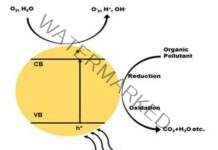March 24, 2023: It’s good news for Ganga bhakts. Though critical pollution levels in Ganga water had hogged limelight for the past several decades, efforts over the years at various levels initiated by Central as-well-as State government to put a check rising pollution level now seems to have started to bear fruit.
As per data of Uttar Pradesh Pollution Control Board (UPPCB), a comparison of Total Coliform bacteria count, measured in February 2017 to that measured in February 2023, in different districts of UP comprising the river’s route, bears testimony to the positive outcome of relentless efforts put in to check the crisis over the years. Be it spreading awareness amongst the masses or setting up of Sewage Treatment Plants in most of the 28 districts of the state through which the river passes.
For example, UPPCB data revealed, count of Total Coliform bacteria measured at 43000 MPN/ML at Prayagraj Downstream (DS) in February 2016 dropped to a significantly low 2400 MPN/ML in February 2023 while the count of Total Coliform bacteria measured at 40,000 MPN/ML at Prayagraj Upstream (US), Rasulabad Ghat in February 2016 plummeted to 2000 MPN/ML in February 2023.
Likewise, the count of bacteria measured at 63000 MPN/ML at Varanasi Downstream in February 2016 declined to 20,000 MPN/ML in February 2023 while the 33000 MPN/ML bacteria count measured at Ghazipur (Tarighat) Downstream in February 2016 also dropped to 22,000 MPN/ML in February 2023.
Further, UPPCB findings revealed, at Kadaghat, Kaushambi district, the count of Total Coliform bacteria measured at 41000 MPN/ML in February 2016 dropped to a significantly low 1500 MPN/ML in February, 2023.
Also, in a span of seven years the count of Total Coliform bacteria measured at 7900 MPN/ML in Kalakankar, Pratapgarh dropped to a significantly low 2200 MPN/ML while in Dalmau, Rae Bareili, the 8300 MPN/ML count of Total Coliform bacteria dropped to 2200 MPN/ML.
The maximum prescribed limit of the bacteria in water considered safe for drinking is 50 MPN (Maximum Probable Number)/ML while that for bathing outdoors is 500 MPN/ML.
According to Amicus Curie, Allahabad High Court in the Re-Ganga pollution case, Arun Kumar Gupta the relentless efforts put in over the years by all concerned has started to give positive outcome.
“However, the work is yet not over as nearly half of the path to free Ganga of the menace has been treaded till now while the remaining part of the work is yet to be completed,” he said.
As per Gupta, seven STPs were functional in Prayagraj besides four STP each were operational in Kanpur and Varanasi. A similar count was also in use in some other districts of the state also. However, he further informed, STPs were also the need of the hour in some other districts also which was vital to make the river regain its original clean form once again.
It may be mentioned that during the 2019 Mahakumbh mela, seers had protested against the pollution levels in Ganga as they found it unfit for bathing. However, now with the significant improvement in water quality of the river, seers and devotees would get much cleaner Ganga water for bathing during the forthcoming Kumbhmela 2025.
Ganga river enters Uttar Pradesh from Bijnor and flows approximately 1140 km in the state only to join the Yamuna at Sangam in Prayagraj.
District 2016 2023
Prayagraj DS 43000 2400
Prayagraj US Rasulabad 40,000 2000
Kaushambi Kadaghat 41000 1500
Varanasi DS 63000 20000
Ghazipur (Tarighat) DS 33000 22,000
Pratapgarh, Kalakankar 7900 2200
Rae Bareili, Dalmau 8300 2200































